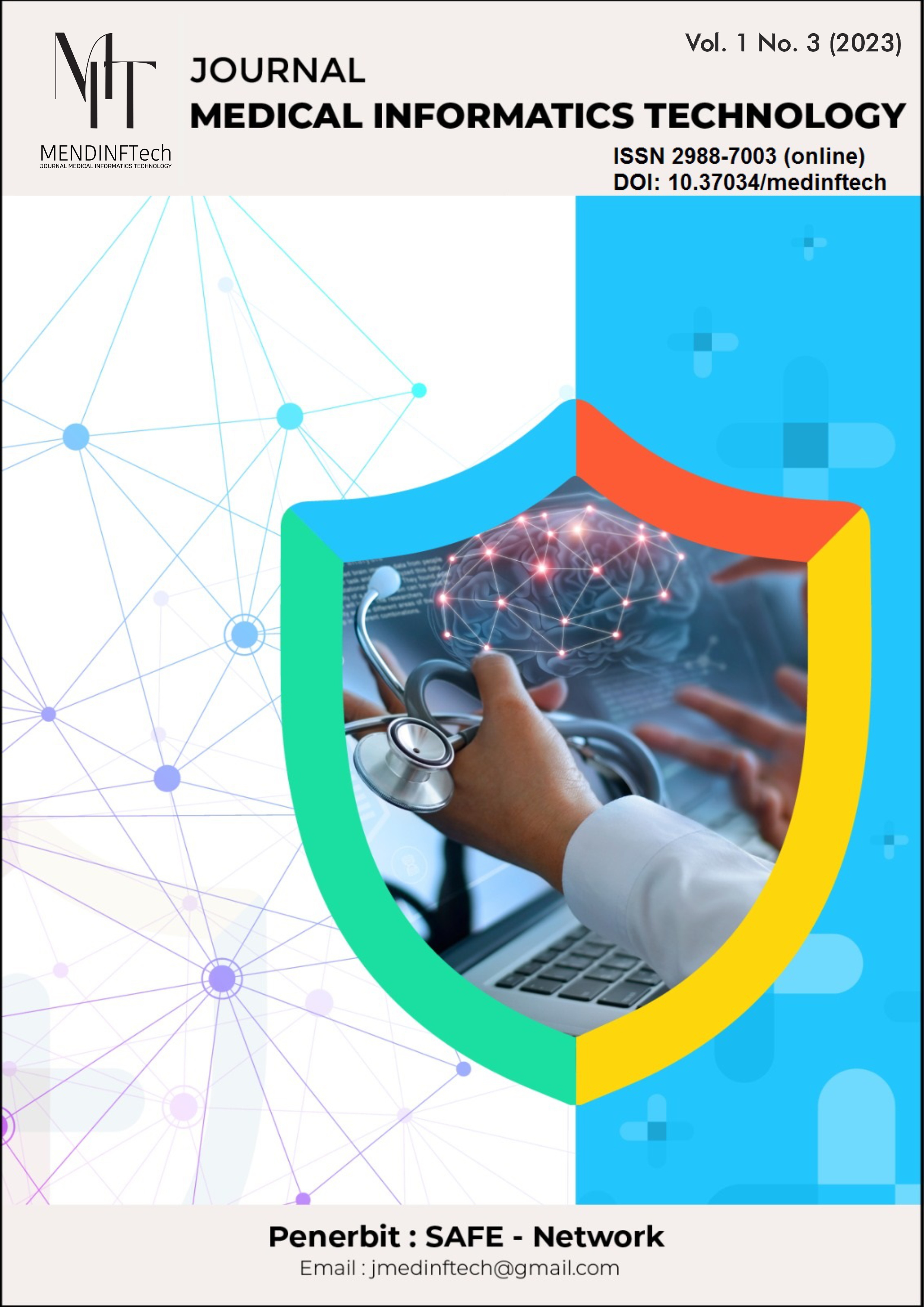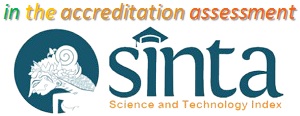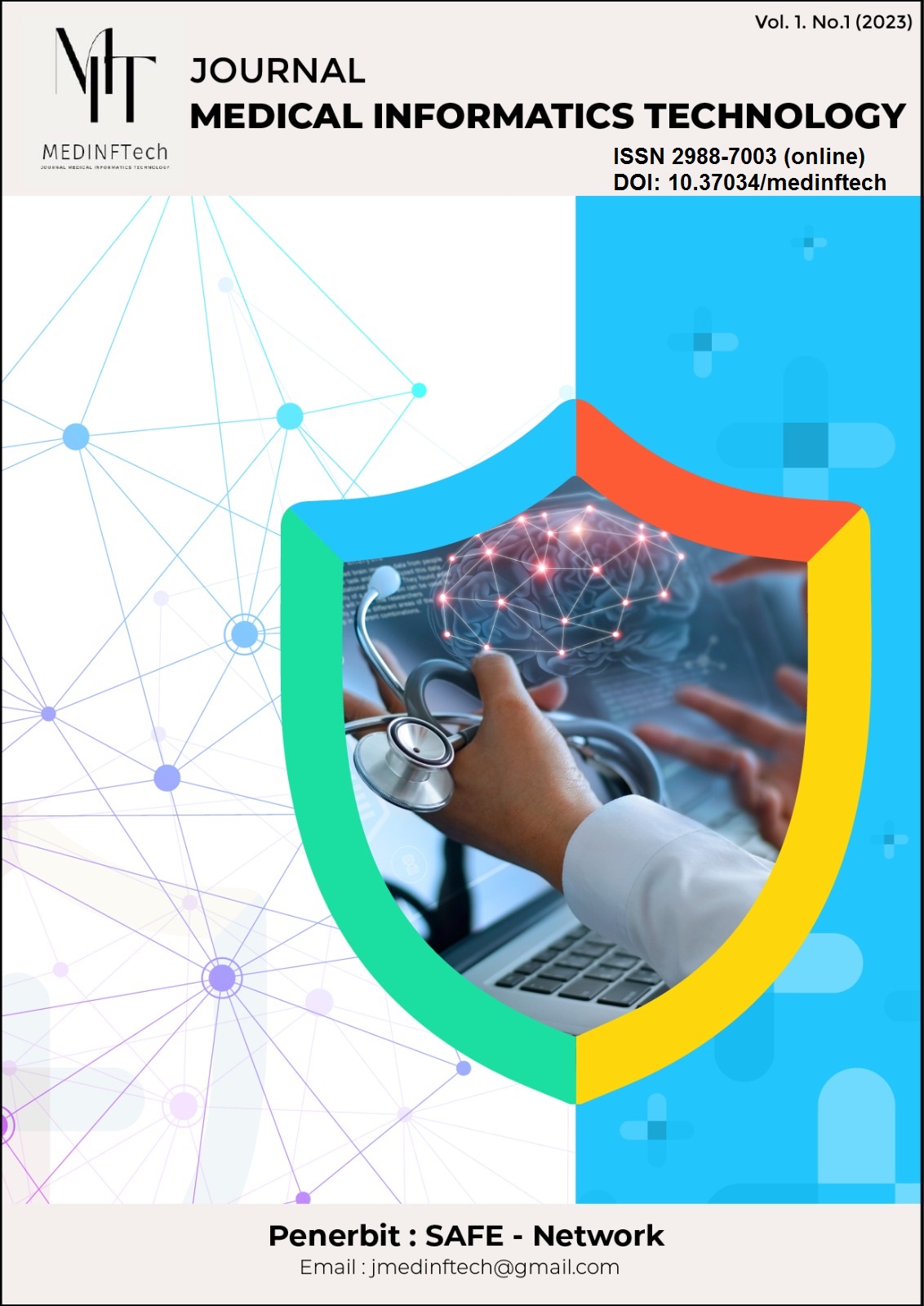Comparison Algorithm on Machine Learning for Student Mental Health Data
DOI:
https://doi.org/10.37034/medinftech.v1i3.18Keywords:
Comparison, Algorithm , Mental Health, Machine Learning, PsychologyAbstract
The COVID-19 pandemic has posed unparalleled difficulties, encompassing substantial repercussions on the emotional well-being of students. This study utilises machine learning methodologies to forecast the mental health condition of students during and following the pandemic. The dataset consists of 11 distinct attributes and a total of 101 data points, which have been gathered from multiple sources. The preprocessing stage encompasses the removal of unnecessary characteristics, handling missing data, and partitioning the dataset into separate subsets for training and validation purposes. This study utilises three machine learning algorithms, namely RF, KNN, and NB, in order to make predictions regarding the potential need for psychiatric support among students. These algorithms are carefully optimised to enhance their predictive capabilities. Evaluation metrics commonly used in several fields of study. The findings suggest that the KNN and RF algorithms had outstanding performance, but the Naïve Bayes algorithm exhibited satisfactory accuracy and a balanced trade-off between precision and recall. The optimised models have practical consequences that may be applied at educational institutions and inform policymakers. These implications include the ability to provide tailored interventions and support services specifically designed for students who are facing mental health difficulties as a result of the epidemic. Future research endeavours encompass the need for additional improvement of existing models and the fostering of interdisciplinary collaboration. This study provides significant contributions to the field by examining the utilisation of machine learning techniques in addressing the mental health needs of students both during and after the epidemic.
Downloads
References
M. Mulvenna, T. O’Neill, C. Ramsey, S. O’Neill, R. Bond, and E. Ennis, “Our Generation app: European Conference on Mental Health,” Sep. 2023, pp. 99–100.
“IJERPH | Free Full-Text | The Association between Green Space and Adolescents’ Mental Well-Being: A Systematic Review.” https://www.mdpi.com/1660-4601/17/18/6640 (accessed Sep. 15, 2023).
“WHO European framework for action on mental health 2021–2025.” https://apps.who.int/iris/handle/10665/352549 (accessed Sep. 15, 2023).
“The influence of illness perception, anxiety and depression disorders on students mental health during COVID-19 outbreak in Pakistan: a Web-based cross-sectional survey | Emerald Insight.” https://www.emerald.com/insight/content/doi/10.1108/IJHRH-10-2020-0095/full/html (accessed Sep. 15, 2023).
F. Aziz, D. Riana, J. D. Mulyanto, D. Nurrahman, and M. Tabrani, “Usability Evaluation of the Website Services Using the WEBUSE Method (A Case Study: covid19. go. id),” in Journal of Physics: Conference Series, IOP Publishing, 2020, p. 012103.
“How does psychological capital lead to better well-being for students? The roles of family support and problem-focused coping | SpringerLink.” https://link.springer.com/article/10.1007/s12144-022-03339-w (accessed Sep. 15, 2023).
“A new approach in identifying the psychological impact of COVID-19 on university student’s academic performance - ScienceDirect.” https://www.sciencedirect.com/science/article/pii/S1110016821007171 (accessed Sep. 15, 2023).
“Remote Sensing | Free Full-Text | Random Forest Spatial Interpolation.” https://www.mdpi.com/2072-4292/12/10/1687 (accessed Sep. 15, 2023).
“Sensors | Free Full-Text | An Enhanced Intrusion Detection Model Based on Improved kNN in WSNs.” https://www.mdpi.com/1424-8220/22/4/1407 (accessed Sep. 15, 2023).
“A novel selective naïve Bayes algorithm - ScienceDirect.” https://www.sciencedirect.com/science/article/abs/pii/S0950705119306185 (accessed Sep. 15, 2023).
H. Elmunsyah, R. Mu’awanah, T. Widiyaningtyas, I. A. E. Zaeni, and F. A. Dwiyanto, “Classification of Employee Mental Health Disorder Treatment with K-Nearest Neighbor Algorithm,” in 2019 International Conference on Electrical, Electronics and Information Engineering (ICEEIE), Oct. 2019, pp. 211–215. doi: 10.1109/ICEEIE47180.2019.8981418.
L. K. Xin and N. binti A. Rashid, “Prediction of Depression among Women Using Random Oversampling and Random Forest,” in 2021 International Conference of Women in Data Science at Taif University (WiDSTaif ), Mar. 2021, pp. 1–5. doi: 10.1109/WiDSTaif52235.2021.9430215.
W. A. van Eeden et al., “Predicting the 9-year course of mood and anxiety disorders with automated machine learning: A comparison between auto-sklearn, naïve Bayes classifier, and traditional logistic regression,” Psychiatry Res., vol. 299, p. 113823, May 2021, doi: 10.1016/j.psychres.2021.113823.
“Student Mental health.” https://www.kaggle.com/datasets/shariful07/student-mental-health (accessed Sep. 15, 2023).
T. Hidayat, D. U. E. Saputri, and F. Aziz, “MEAT IMAGE CLASSIFICATION USING DEEP LEARNING WITH RESNET152V2 ARCHITECTURE,” J. Techno Nusa Mandiri, vol. 19, no. 2, pp. 131–140, 2022.
“Google Colaboratory | SpringerLink.” https://link.springer.com/chapter/10.1007/978-1-4842-4470-8_7 (accessed Sep. 15, 2023).









